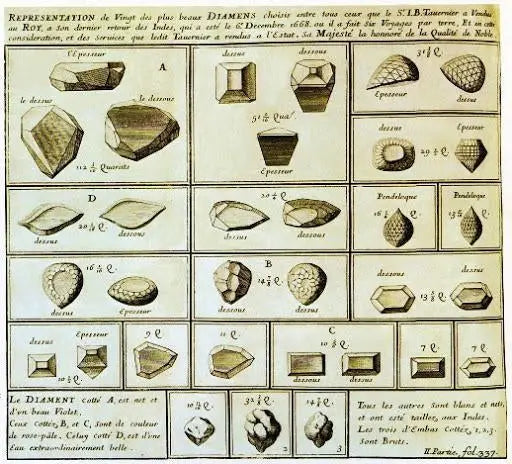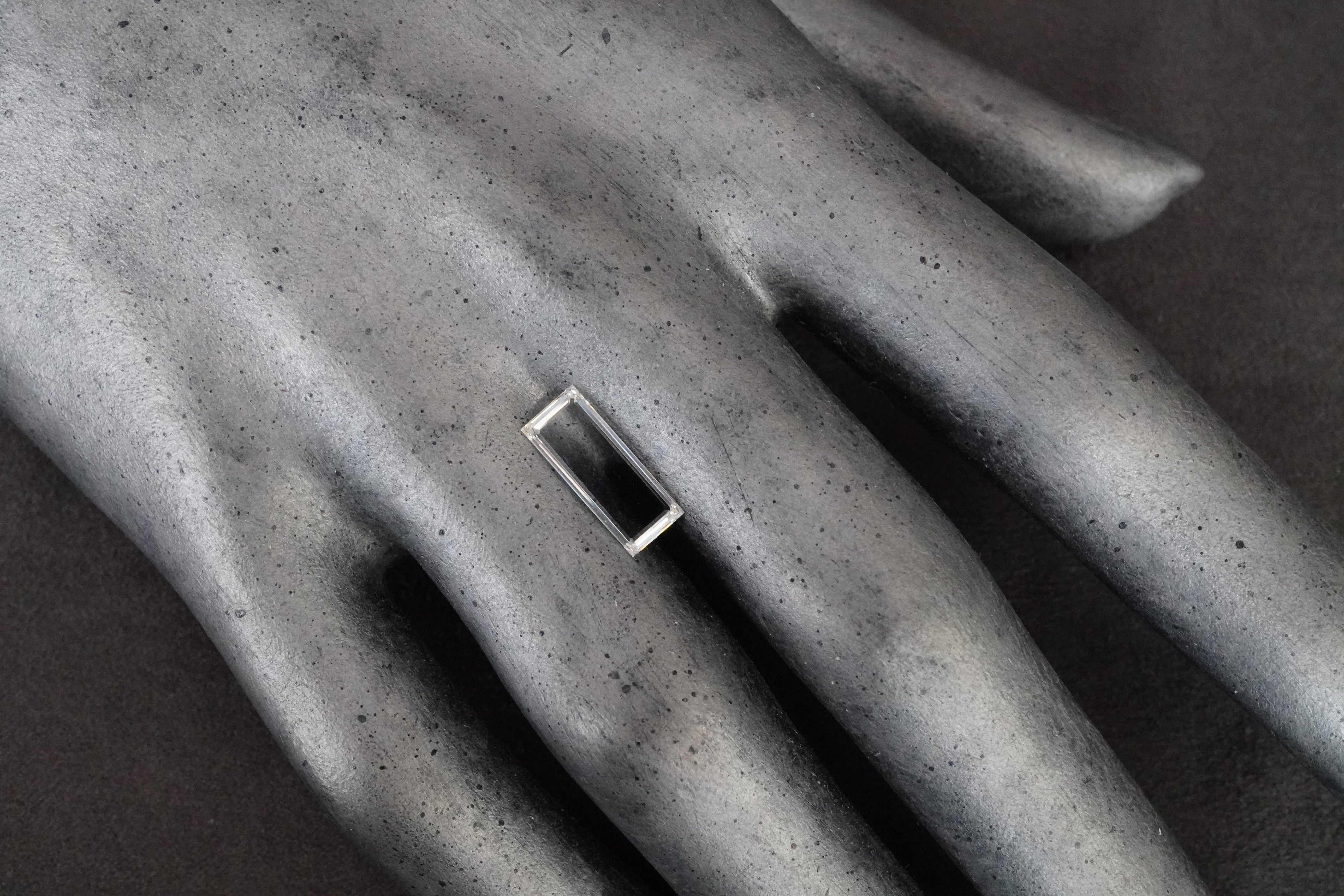
Antique Diamond Cuts: The Usual Suspects
An antique diamond does not always signify an antique jewel. Jewelry collectors use visual tools to determine the workmanship and quality of a piece, thus being able to estimate the age and even maker of a jewel. One of these tools is determining the cut of the accent stones as well as the center, possibly determining if one was replaced or if they could have originated much earlier than the jewel itself was made.
Anyone who deals or collects antique jewelry knows the importance of diamond cuts: how to identify and distinguish the era, grading the quality and how each one gives an excerpt of the journey made in crafting the jewel.
Whether you’re on the lookout for a treasure to add to your collection or simply looking to expand your knowledge of what to look for in an antique piece, it’s important to know the different antique diamond cuts that would be used in a genuine piece of antique jewelry. Here are some of the usual suspects you may find:
1. Single Cut
Simple, elegant, and beautifully rustic, single cut diamonds are reflective of the earliest days of diamond cutting. They originated in the early 1300s, when diamond cutters would simply smooth off the four corners of square table cut diamonds to create 9 facets on the diamond’s crown and 9 on its pavilion. As a result, single cut diamonds have only up to 18 facets, and they’re easily distinguished by their round shape.
2. Table Cut
A Georgian Table Cut Diamond and Gold Cross Pendant, from the Jogani Collection
Table cut diamonds first made their way into the industry in the 1500s, and they rose in popularity throughout the 1600s and 1700s. Named after the flat table that’s found at its top, the table cut diamond is considered by many to be the “first true diamond cut”: the ancestor of many of the diamond shapes popular today. Each of its four sides has a simple facet, similar to a bevel, with the top and bottom points of the octahedron removed.
3. Rose Cut
The rose cut is one of the earliest diamond cuts. Its origins trace all the way back to the early 1500s, and its subtle, minimalist look reflects the basic cutting techniques of the time. The rose cut diamond can have anywhere from 3 to 24 triangular facets, all of which peak into a kite shape or dome that resembles the curve of a rose petal.
Elegant and reminiscent of the old world, the rose cut is seen most often in diamonds from the pre-Edwardian era. Unlike modern brilliant cut diamonds, rose cut diamonds radiate with soft, diffused light - a subtle touch of old-world romance.
Rose cut diamonds declined in popularity throughout the 20th century - in fact, only about 0.1% of modern diamonds are rose cuts. However, in recent years, interest in the cut has piqued once again.
4. Peruzzi Cut
A Georgian Cluster Diamond Ring with approx. 2.0 ct center Peruzzi Cut Diamond, sold from the Jogani Collection
In the 1700s, a Venetian polisher by the name of Vincent Peruzzi developed the Peruzzi cut diamond. Vincent Peruzzi was the first to cut a diamond with 56 facets, and the diamond he developed exhibited much more brilliance than any of its earlier counterparts. The form of cutting he used is also known as a “triple cut”, and it’s very rare to find Peruzzi cut diamonds on the market. With their numerous slender facets, Peruzzi cut diamonds shine exceptionally bright - and they do well in all different kinds of light environments.
5. Old Mine Cut
Many diamond lovers consider old mine cut diamonds to be the “ancestors” of modern brilliant cut diamonds. During the 1700s and 1800s, throughout the Georgian and Victorian eras, this cut became common amongst jewelry lovers. When crafting old mine cut diamonds, diamond cutters would use the gem’s natural octahedral shape as a guide, creating chunky, geometric diamonds with 58 facets.
The old mine cut diamond is most easily distinguished by its square “cushion” shape, high crown, and tiny table (the flat facet of the diamond). Because old mine cut diamonds are no longer created, it’s rare to find one - most collectors are willing to pay large sums to get their hands on one of good quality.
6. Old European Cut
The old European cut diamond first surfaced in the late 19th century and its round appearance differentiated it from the square-shaped old mine cut. Featuring a small table, high crown, and large culet, the old European cut diamond was popular during the Victorian and Edwardian eras, and was especially favored during the Art Deco period.
Old European cuts are considered the most “advanced” of the antique cuts, and they were the first cut with carat weight taking precedence over brilliance. Old European cut diamonds give broad flashes of light as they absorb light from their crown facets. They display beautifully in natural light, and are easily distinguished by their round shape and large triangular facets with an open culet seen at the center of the diamond’s table.
7. Emerald Cut (Step Cut)
Though the shape of the emerald cut diamond can be traced as far back as the 1500s, the term “emerald cut” or "baguette" was not used until the 1920s, when the cut made its way into the mainstream. Inspired by the clean and symmetrical lines of the Art Deco period, emerald cut diamonds became a popular choice for engagement rings - and they remain one of the most sought after diamond cuts to this day.
If you would like to read more about antique cut diamonds, please read our additional blogs on Portrait Cut Diamonds, Point Cut Diamonds, Table Cut Diamonds and more in our Jewel School and Mind of a Dealer.


